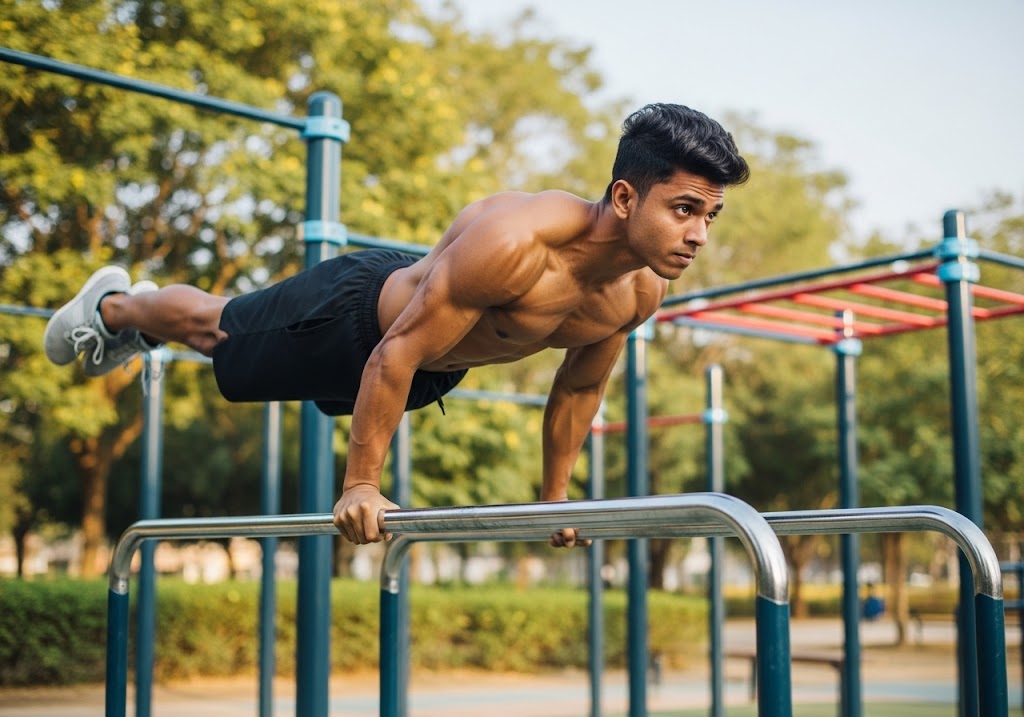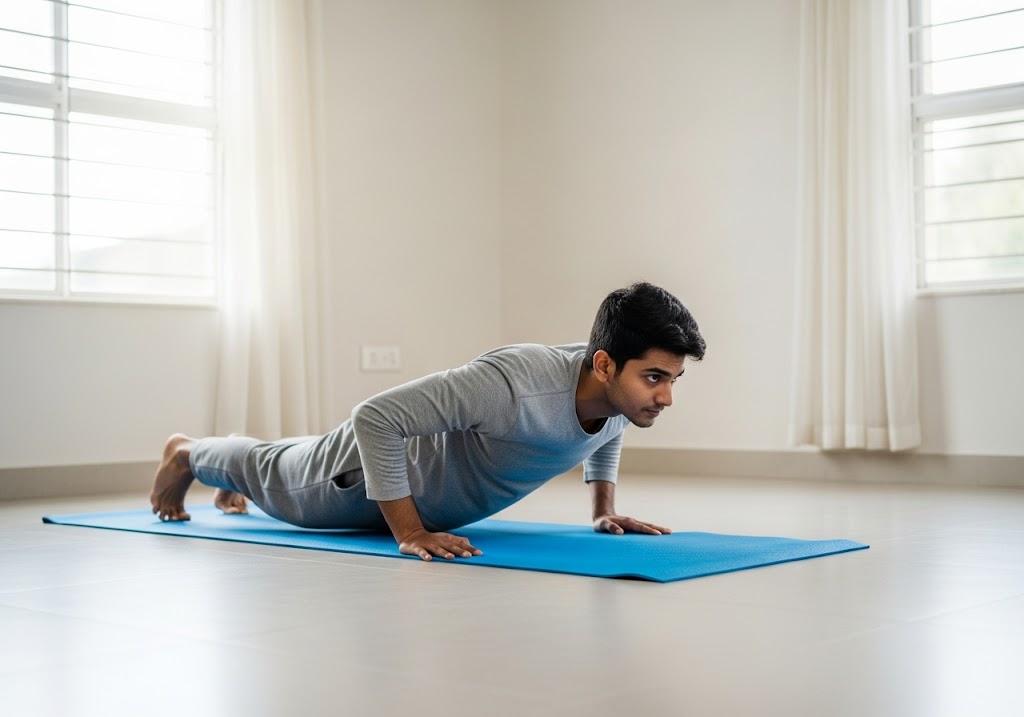Split squat vs lunge comparison reveals that split squats are stationary single-leg exercises with rear foot elevated, while lunges involve stepping forward or backward, with split squats offering better stability and lunges providing more dynamic movement.
Choosing between these two powerful lower body exercises can significantly impact your training results. Both split squats and lunges target similar muscle groups but offer unique benefits for strength, stability, and athletic performance. Understanding the key differences helps you select the right exercise for your specific fitness goals and training experience.
The split squat vs lunge debate continues among fitness professionals because both exercises excel in different areas. Split squats provide excellent muscle isolation and stability training, while lunges offer dynamic movement patterns that closely mimic daily activities. Your choice between these exercises should align with your training objectives, experience level, and physical capabilities.
Table of Contents
Understanding Split Squat vs Lunge
The fundamental difference between split squat vs lunge lies in movement patterns and stability requirements. Split squats maintain a fixed stance with elevated rear foot, while lunges involve dynamic stepping motions that challenge balance and coordination throughout the movement.
| Exercise Aspect | Split Squat | Lunge |
|---|---|---|
| Movement Type | Stationary position | Dynamic stepping |
| Foot Position | Rear foot elevated | Both feet on ground |
| Balance Challenge | Lower | Higher |
| Setup Complexity | Requires bench/platform | Needs open floor space |
| Learning Curve | Easier to master | More coordination needed |
| Stability Focus | High muscle isolation | Dynamic stabilization |
| Range Control | Fixed position allows deeper range | Variable range based on step |
| Equipment Needs | Bench or platform required | Bodyweight or weights only |

Split Squat vs Lunge: Muscle Activation
Understanding muscle activation patterns in split squat vs lunge helps target specific muscle groups more effectively. Both exercises activate similar muscles but with different emphasis levels based on movement mechanics and stability requirements.
| Muscle Group | Split Squat | Lunge | Winner |
|---|---|---|---|
| Quadriceps | 85-90% activation | 70-80% activation | Split Squat |
| Glutes | 70-75% activation | 80-85% activation | Lunge |
| Hamstrings | 60-65% activation | 55-70% activation | Split Squat |
| Calves | High rear leg activation | Balanced both legs | Split Squat |
| Hip Flexors | Deep stretch rear leg | Moderate stretch | Split Squat |
| Core Muscles | Steady activation | Dynamic activation | Lunge |
| Stabilizers | High isolation | Coordination focus | Split Squat |
| Overall Activation | Targeted intensity | Full body integration | Depends on goals |
Learn how to do glute bridge for a stronger lower body and core.
Split Squat vs Lunge: Balance & Stability Requirements
The balance and stability demands differ significantly between split squat vs lunge exercises, affecting their suitability for different training goals and experience levels. Understanding these requirements helps choose the appropriate exercise for your current abilities.
| Stability Factor | Split Squat | Lunge | Difficulty Level |
|---|---|---|---|
| Base of Support | Wide tripod base | Narrow dynamic base | Split Squat easier |
| Balance Challenge | Low to moderate | Moderate to high | Lunge harder |
| Proprioception | Steady position | Dynamic adjustment | Lunge trains more |
| Beginner Friendly | High | Moderate | Split Squat wins |
| Core Demands | Steady bracing | Dynamic control | Lunge requires more |
| Fall Risk | Very low | Low to moderate | Split Squat safer |
| Learning Time | Quick mastery | Longer practice needed | Split Squat faster |
| Load Capacity | Higher weights possible | Limited by balance | Split Squat allows more |
Step-by-step guide to how to do Arnold press for shoulder strength and definition.
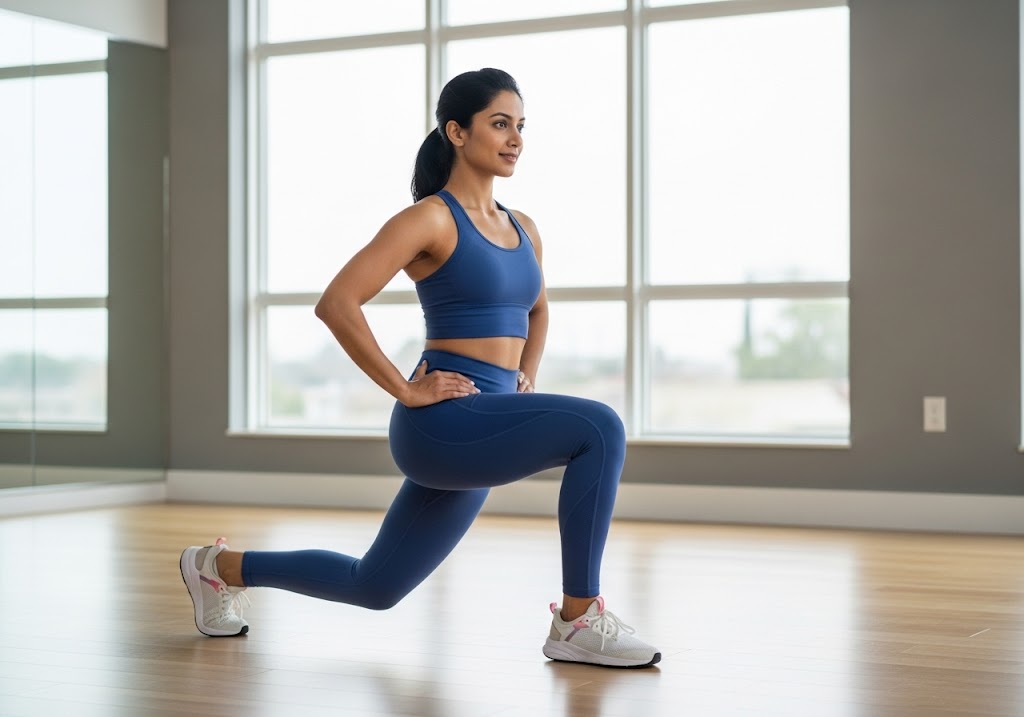
Split Squat vs Lunge: Range of Motion
Range of motion differences in split squat vs lunge affect muscle activation patterns and flexibility benefits. The ability to control and adjust range of motion impacts both exercise effectiveness and injury prevention strategies.
Movement mechanics determine how range of motion varies between split squat vs lunge exercises. Split squats allow for deeper knee flexion and hip extension due to the stable rear foot position, while lunge range depends on step length and flexibility levels.
| Range Factor | Split Squat | Lunge |
|---|---|---|
| Knee Flexion | 90-120 degrees possible | 70-90 degrees typical |
| Hip Flexion | Deep range with control | Moderate range |
| Ankle Mobility | Rear ankle stretched | Both ankles mobile |
| Step Control | Fixed position | Variable step length |
| Depth Adjustment | Platform height varies range | Step length affects range |
| Flexibility Demands | Moderate to high | Moderate |
| Range Consistency | Same range each rep | Can vary between reps |
Learn about resistance band exercises for abs for core strengthening to support both movements.
Split Squat vs Lunge: Functional Strength Transfer
Functional strength transfer represents how well split squat vs lunge exercises improve real-world movement patterns and athletic performance. The movement specificity determines which exercise better prepares your body for daily activities and sports demands.
| Transfer Application | Split Squat | Lunge | Real-World Benefit |
|---|---|---|---|
| Walking/Running | Good strength base | Excellent gait mimicry | Lunge wins |
| Stair Climbing | High single-leg power | Good step coordination | Split Squat better |
| Athletic Movements | Pure strength focus | Dynamic movement patterns | Lunge superior |
| Jump Performance | Excellent power development | Good landing mechanics | Split Squat wins |
| Balance Activities | Moderate transfer | High dynamic balance | Lunge better |
| Injury Prevention | Strength imbalance fix | Movement coordination | Both excellent |
| Daily Tasks | Good for lifting | Better for stepping | Lunge edges out |
| Sport Specificity | Power movements | Agility and direction change | Lunge wins |
Try these effective arm workouts with dumbbells for women – beginner-friendly and results-driven!
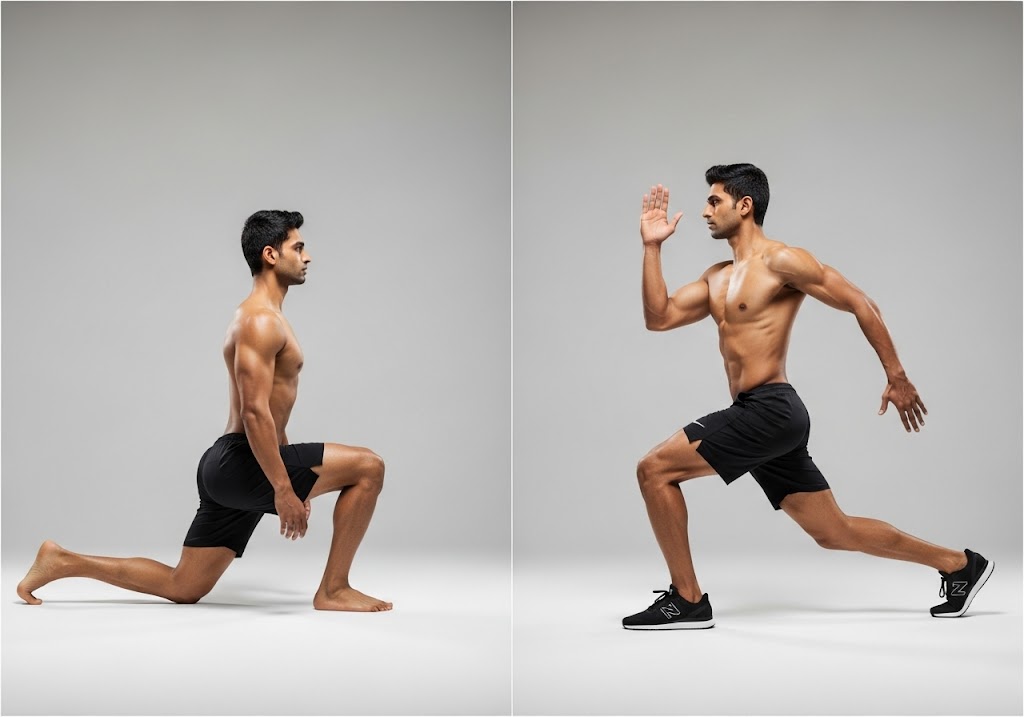
Split Squat vs Lunge: Progression & Load Potential
Progression strategies and loading potential differ significantly between split squat vs lunge exercises, affecting long-term strength development and training adaptations. Understanding these differences helps plan effective progression schemes for continued improvement.
| Progression Factor | Split Squat | Lunge | Advantage |
|---|---|---|---|
| Weight Loading | Up to 200+ kg possible | Limited to 50-100 kg | Split Squat |
| Stability for Loading | Very stable platform | Balance limits load | Split Squat |
| Barbell Use | Excellent for barbell | Challenging with barbell | Split Squat |
| Dumbbell Loading | Easy bilateral loading | Good unilateral options | Split Squat |
| Plyometric Potential | Limited explosive options | Excellent jump variations | Lunge |
| Direction Variations | Forward/back only | Multi-directional options | Lunge |
| Speed Training | Moderate potential | High velocity training | Lunge |
| Beginner Progression | Clear weight increases | Technique then load | Split Squat |
Discover how to lift heavier weights for progressive loading strategies.
Split Squat vs Lunge: Joint Impact & Knee Safety
Joint impact and knee safety considerations in split squat vs lunge exercises affect exercise selection for individuals with joint concerns or injury history. Understanding the biomechanical differences helps choose the safer option for long-term joint health.
The controlled nature of split squat vs lunge movements affects joint stress patterns differently. Split squats distribute forces more predictably due to the stable position, while lunges create variable force patterns through the stepping motion that may stress joints differently.
| Safety Factor | Split Squat | Lunge |
|---|---|---|
| Knee Stress | Controlled, predictable | Variable with step length |
| Impact Forces | Lower impact | Higher impact from stepping |
| Joint Alignment | Easier to maintain | Requires active control |
| Injury Risk | Lower for beginners | Higher learning curve |
| Control Level | High movement control | Moderate control |
| Force Distribution | Even distribution | Variable force patterns |
| Rehabilitation Use | Excellent for rehab | Use with caution |
Check out how to do glute bridge for additional knee-friendly lower body strengthening.
Split Squat vs Lunge: Core Engagement
Core muscle engagement varies significantly between split squat vs lunge exercises, influencing overall training benefits and functional strength development. The stability requirements directly impact how much core activation occurs during each movement.
| Core Aspect | Split Squat | Lunge | Activation Pattern |
|---|---|---|---|
| Static Bracing | High constant tension | Moderate steady | Split Squat higher |
| Dynamic Control | Low variability | High adaptability | Lunge superior |
| Anti-Extension | Strong pattern | Moderate pattern | Split Squat wins |
| Multi-Planar Work | Single plane focus | Multiple planes | Lunge better |
| Rotational Control | Minimal rotation | Active anti-rotation | Lunge trains more |
| Breathing Integration | Controlled patterns | Coordinated breathing | Split Squat easier |
| Progressive Challenge | Weight-dependent | Movement-dependent | Both effective |
| Transfer to Sports | Good for strength | Excellent for function | Lunge edges out |
Learn about jumping jacks exercise benefits for additional functional movement training.
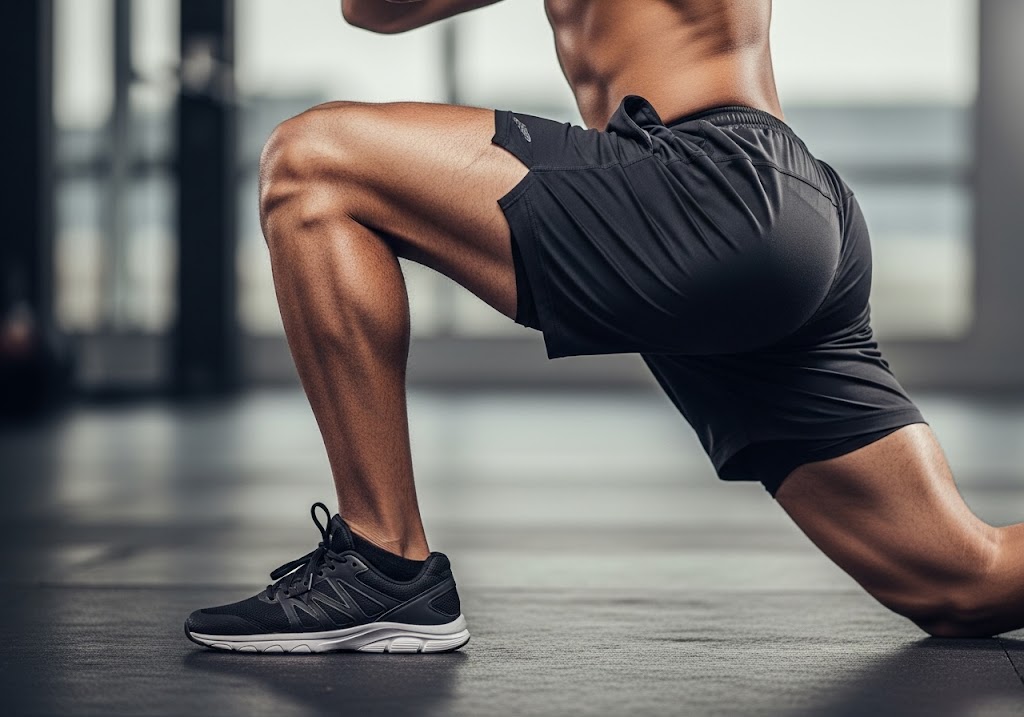
Split Squat vs Lunge: Unilateral Strength Development
Unilateral strength development represents a key benefit of both split squat vs lunge exercises, though they achieve this goal through different mechanisms. Single-leg strength is crucial for athletic performance, injury prevention, and addressing muscle imbalances.
| Strength Factor | Split Squat | Lunge | Development Focus |
|---|---|---|---|
| Leg Isolation | 90% working leg | 70-80% working leg | Split Squat superior |
| Strength Imbalance ID | Excellent detection | Good detection | Split Squat better |
| Max Strength Building | Highest potential | Moderate potential | Split Squat wins |
| Functional Integration | Lower integration | High integration | Lunge better |
| Bilateral Cooperation | Minimal involvement | Coordinated work | Lunge trains more |
| Weakness Addressing | Direct targeting | Indirect improvement | Split Squat focused |
| Power Development | Good explosive potential | Excellent dynamic power | Lunge edges out |
| Sport Transfer | Strength specific | Movement specific | Depends on sport |
Check out what is foam rolling for recovery techniques after intense training.
Split Squat vs Lunge: Ease of Learning & Execution
Learning difficulty and execution complexity in split squat vs lunge exercises significantly impact their suitability for different populations and training settings. Understanding these factors helps choose appropriate exercises based on experience level and available instruction time.
The learning curve for split squat vs lunge exercises varies considerably based on balance demands and coordination requirements. Split squats generally present fewer learning challenges due to their stable base of support, making them ideal for beginners or those with balance concerns.
| Learning Factor | Split Squat | Lunge |
|---|---|---|
| Initial Difficulty | Lower learning curve | Higher coordination needed |
| Balance Challenge | Minimal while learning | Significant from start |
| Form Feedback | Easier to self-correct | Requires more guidance |
| Common Mistakes | Fewer technique errors | More movement faults |
| Teaching Time | Quick to learn basics | Longer instruction needed |
| Practice Required | Less repetition needed | More practice for mastery |
| Confidence Building | Builds confidence faster | May intimidate beginners |
Check out how to do plank exercise for building the core strength needed for both exercises.
Split Squat vs Lunge: Calorie Burn & Intensity Level
Calorie burn and exercise intensity differ between split squat vs lunge exercises based on muscle mass involvement, movement complexity, and metabolic demands. Understanding these differences helps optimize workout design for specific energy expenditure goals.
| Intensity Factor | Split Squat | Lunge | Energy Expenditure |
|---|---|---|---|
| Calories per Minute | 8-12 calories | 12-18 calories | Lunge burns more |
| Heart Rate Elevation | Moderate increase | Higher increase | Lunge wins |
| Movement Complexity | Lower complexity | Higher complexity | Lunge more intense |
| Time Under Tension | High muscle tension | Moderate tension | Split Squat focused |
| Dynamic Movement | Minimal dynamics | High dynamics | Lunge superior |
| Recovery Demands | Higher local fatigue | Moderate systemic | Split Squat tougher |
| Circuit Training | Good for strength | Excellent for cardio | Lunge better |
| Post-Exercise Burn | Good EPOC effect | Moderate EPOC | Split Squat edges out |
Explore bodybuilding exercises at home for additional lower body training options.

Which Exercise Should You Choose?
Deciding between split squat vs lunge depends on your training goals, experience level, and specific needs. Both exercises offer unique benefits, and the optimal choice varies based on individual circumstances and desired outcomes.
| Your Goal | Choose Split Squat If | Choose Lunge If | Best Option |
|---|---|---|---|
| Maximum Strength | Want heavy loading | Want functional strength | Split Squat |
| Athletic Performance | Power development focus | Agility and speed focus | Lunge |
| Beginner Training | Learning single-leg | Want movement variety | Split Squat |
| Injury Recovery | Knee or balance issues | General conditioning | Split Squat |
| Fat Loss | Muscle building focus | High-intensity cardio | Lunge |
| Sport Specific | Jumping sports | Running/cutting sports | Varies |
| Home Workouts | Have bench/platform | Limited equipment | Lunge |
| Gym Training | Access to heavy weights | Want exercise variety | Both |
Explore must-have calisthenics equipment for home to get started with bodyweight training today.
Conclusion
The split squat vs lunge comparison reveals that both exercises serve important but different roles in lower body training. Split squats excel for strength building and stability, while lunges provide dynamic movement training and functional benefits. Your choice should align with specific goals and training needs.
Want to master the calisthenics handstand and take your skills to the next level? Whether you’re a beginner or pushing advanced skills, ISC – Indian School of Calisthenics offers expert guidance to help you master bodyweight training. Visit us at SRPF Ground, NH8, Goregaon (E), Mumbai – 400065. For class schedules, personalized coaching, or more details, call +91 77159 53218. Train smart, move better, and unlock your back strength with ISC
Split Squat vs Lunge – FAQs
What is the main difference between split squat vs lunge?
Split squats use a stationary elevated rear foot position while lunges involve dynamic stepping motions with both feet on the ground.
Which exercise is better for beginners comparing split squat vs lunge?
Split squats are better for beginners due to their stable base of support and easier balance requirements compared to lunges.
Do split squat vs lunge exercises work the same muscles?
Both work similar muscles but split squats emphasize quadriceps more while lunges provide greater glute activation through dynamic movement.
Can I build more strength with split squat vs lunge exercises?
Split squats typically allow heavier loading for pure strength development while lunges build functional strength through movement patterns.
Which burns more calories in split squat vs lunge comparison?
Lunges generally burn more calories due to dynamic movement and greater overall muscle activation compared to split squats.
Are split squat vs lunge exercises safe for knee problems?
Split squats are typically safer for knee issues due to controlled movement while lunges may stress knees through impact forces.
How do I progress from split squat vs lunge exercises?
Progress split squats by adding weight or elevation while advance lunges through directional variations and plyometric movements.
Which provides better balance training between split squat vs lunge?
Lunges provide superior balance training due to dynamic stepping and weight transfer compared to stable split squat position.
Can I do both split squat vs lunge in the same workout?
Yes, combining both exercises provides stability training from split squats and dynamic challenge from lunges for complete development.
How often should I perform split squat vs lunge exercises?
Perform these exercises 2-3 times per week with adequate recovery time between sessions for optimal strength and adaptation benefits.
